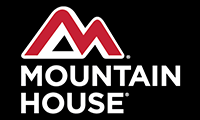Readers of Last Minute Survival will know that I have discussed on many occasions the long term detrimental impacts of socialized health care. Some of the most serious problems that inevitably arise are increasing costs of care (to the point of unaffordable), serious shortages in both drugs and doctors (to the point of unavailability), a decrease in the quality of care (to the point of forced acceptance of lower standards), and an increase in wait time for procedures (to the point of patients dying before than can get definitive care). These problems are endemic to socialized healthcare systems and can be contemporarily witnessed in places like Venezuela where the ability to obtain toilet paper and sutures has become impossible since the socialist takeover of the country’s government. Now, contrary to the rosy picture the Obama Administration has painted of its signature healthcare reform package, the US has begun to demonstrate those very same predictable symptoms of a healthcare system beginning to collapse. In particular, this article looks at the unprecedented spike in drug shortages that have not so coincidentally occurred since Obama took office. Is it time to panic? No, but it is time to take note and reverse the socialist course of governance in the US. Failure to reverse course will lead to the destruction of the US healthcare system in short order. As this article documents, the drug shortages have already begun to dramatically increase.
Staunch supporters of Obama and his socialist policies toward healthcare simple refuse to live in the world of reality and are defined by their utter denial of facts. Even when they look at the cost of their healthcare insurance premium and see that the price has doubled, their co-pay has tripled, and their covered care has been limited they engage the most incredible powers of cognitive dissonance to ignore the obvious. Neither this article nor any other amount of data will sway them and I shall not waste my time with them. I am writing to those of you that still care about fact and live in the real world uninsulated from the socialist catastrophe being dictated upon you by the establishment. Just take a look at the current list of critical drug shortages at http://www.ashp.org/drugshortages/current. This huge list is not insignificant. Some of the most important drugs for surgery to include antibiotics and analgesia as well as injectable Sodium Chloride, which is broadly used in nearly every hospital procedure, are listed.
The public needs to take note because the shortage list isn’t getting smaller. In fact, although the Obama Administration has been up to its usual games of data manipulation the reality in the hospitals paints a different picture. Further, the hard numbers still show marked increase across the board in shortages from pre-2008 levels. Here are two excerpts from articles detailing just this fact:
The problem is ongoing. A study of University of Utah Drug Information Service from January 2001 to March 2014 found that 321 drugs used in emergency rooms were in short supply, with more than 52% of those drug used for “lifesaving interventions or for high-acuity conditions.” For 10% of these drugs there were no available substitutes. Drugs for infectious diseases were most common among ER shortages; drug antidotes, heparin and nitroglycerin, have recently been affected by national drug shortages. “In addition, not having commonly used medications to treat everyday conditions, such as prochlorperazine for headache and nausea, can lead emergency physicians (EPs) to choose other less effective medications or use more expensive alternatives,” the Utah study reported. (See: http://www.investopedia.com/articles/personal-finance/030416/cancer-and-other-drug-shortage.asp)
Emergency medicine shortages increased by 435 percent between 2008 and 2014, write the authors of Longitudinal Trends in U.S. Drug Shortages for Medications Used in Emergency Departments (2001–2014). The most common shortages were of drugs for treatment of infectious diseases, analgesia, and toxins. (See: http://news.heartland.org/newspaper-article/2016/03/04/er-drug-shortages-rise-study-finds)
Looking over the data, it appears that the major discrepancies in the data have arisen from how and what data are reported. The Obama Administration wants to obfuscate the actual reality of the growing shortages so has chosen to selectively report on the number of “new” drugs listed in short supply rather than looking at the total number of drugs in short supply. (See: http://www.ashp.org/DocLibrary/Policy/DrugShortages/OPA-National-Drug-Shortages.pdf) Further, it appears the Administration may have preferred to redefine and take a very constrained position on how they categorize “shortage” to minimize the number of new drugs being listed. The government has also taken actions through the Food and Drug Administration (FDA) to reduce safety standards to alleviate shortages that depending on who you talk to was an appropriate action. Either way, as a result of this manipulation, the government has been able to maintain some degree of plausible deniability even as the situation in the emergency and operating rooms has become at times critical with respect to availability of drugs. This isn’t something that has just occurred to me, but many other analysts per the below excerpt:
John Graham, a senior fellow at the Independent Institute and adjunct scholar at the Mackinac Center for Public Policy, says although drug shortages do occur, the database AEM consulted for its study may not be reliable. “Even the quality of information on this topic is jeopardized by conflict,” Graham said. “Last April, it was reported that the number of drug shortages reported by the [Food and Drug Administration] and the number reported by the University of Utah Drug Information Service, the leading private source of this data, are diverging dramatically.” (See: http://news.heartland.org/newspaper-article/2016/03/04/er-drug-shortages-rise-study-finds)
Accepting that drug shortages have increased is an obvious conclusion for an unbiased analyst. However, one wades neck deep into political issues when the substantive cause(s) for the shortages are addressed. Anecdotal evidence abounds that correlates the emergence of Obama’s policies with the simultaneous spike in drug shortages, but that isn’t enough to prove or disprove anything. Looking more closely at the empiric evidence, one can connect classic price controls, which are one of the hallmarks of socialized medicine with at least a portion of the shortages. These price controls have had both a direct and indirect impact. The direct market impacts of limiting profit margins of pharmaceutical companies are fairly straightforward in that companies won’t invest, develop, or continue to manufacturer something at a loss. The indirect effects such as mandating the use of generic drugs or removing patent protections on key drugs (actions one may initially see as a “good” thing) are slightly less obvious. Specifically, when Obamacare mandated the use of generic drugs and only provided insurance coverage for these drugs, most companies no longer were able to earn enough profit from their manufacture to continue making the drugs. As a result, common, but needed generic drugs have begun to show up in short supply. This is enough to definitively say that Obamacare has had a detrimental effect on the availability of drugs. Unfortunately, the government that created this mess is only going to make it worse. The Administration doesn’t seem to realize that unwinding the web of regulation is actually the first step in fixing our healthcare problems. Instead, like every previous socialist system (all of which fail); it has seen itself as the answer and enacted even greater bureaucratic interference in the market. For example, because of the shortages, the Administration has ordered waivers for certain drugs in short supply from manufacturers with less than stellar quality control records and taken up legislation in Congress to punish drug manufacturers charging “too much” according to the bureaucrats. The end result is very predictable where the drug companies either go out of business or completely withdraw from the market. Either way, this is a disaster for the US healthcare system and is guaranteed to get worse if the “government” is allowed to “fix” the problem.
Again, my observations are not in a vacuum. In fact, no less than the Government Accountability Office (GAO) concurs and has conducted repeated studies into just this problem. In a recent study the GAO stated it:
“identified potential underlying causes specific to the economics of the generic sterile injectable drug market, such as that low profit margins have limited infrastructure investments or led some manufacturers to exit the market.” (See: http://www.gao.gov/assets/670/660785.pdf) This short passage is very damning and explicitly states that low profit margins have indeed led to manufactures exiting the market. Getting more specific, Investopedia.com directly calls out profit margin stating:
And profit (or lack of it) is a major issue. “Drug shortages are almost uniquely associated with generic drugs (small profit margins) and rarely with patented drugs (large profit margins),” according to an analysis in the American Society of Clinical Oncology. Older drugs that have gone generic are reimbursed at a low rate by Medicare and other insurers. (See: http://www.investopedia.com/articles/personal-finance/030416/cancer-and-other-drug-shortage.asp)
For the validity of this article, it was important to identify some of the studies and data behind my assertions. However, I don’t want you to get too focused on the studies. What you need to know is that shortages do extend far beyond the generics for a host of reasons that will only become amplified as the full effects of Obamacare are realized by the market. Further, I don’t want to spend all day explaining the research, but I invite you to study it for yourself since it will ultimately be you that suffers if a drug that is critical for your survival ends up in short supply. Instead, I want to warn you upfront this is happening whether or not you like it or agree with the fundamental causes. Let me repeat, “the shortages will only get worse.” If you are smart, you will work through the system to push back against the Leftist agenda dictating a socialist model for healthcare in the US. In the interim, you will take action by identifying sources for key medications you and your family will need and taking proactive measures to insure you have a safe supply. This may be as simple as confirming with your doctor or pharmacist that there is no immediate shortage of your specific drug and if there is, working out a plan to procure that drug or a safe alternative. I also recommend that if you travel internationally or know someone that does, look into procuring through a pharmacy overseas quality European brand drugs that you know you will need and have a reasonable shelf life. Two lifesaving antibiotics in particular are Azithromycin and Levofloxacin.
To conclude, the US healthcare industry is demonstrating the early stages of the disastrous effects of a socialist healthcare model in the form of unprecedented levels of drug shortages. The government will try to hide and manipulate these data like economic indicators, but the truth will become self-evident to all of us. Further, these problems will not only persist, but worsen if we continue along the path toward socialized medicine. The probability of this situation worsening, barring a drastic policy change, is 100%. Now is the time to take both personal and political action to try and insulate yourself from the approaching storm of drug shortages. Mark my words, if we do not fix the fundamental issues at work, we will soon see the day when surgeries cannot be performed due to shortages of critical drugs, drugs will be rationed by a bureaucrat, pharmaceutical companies will go bankrupt or pull out of the US market, and a huge black market rivaling today’s “illegal” drug market will emerge where only the rich will be able to afford and obtain critical lifesaving drugs.
By Guiles Hendrik
March 20, 2016


